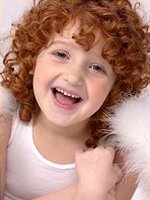|
|
|

Myths about Head lice
By C. H. Hong, MD, FRCPC
An estimated 1 in 10 children in Canada will be affected by a lice infestation this year and it is more common worldwide than the common cold. Head lice infestations, i.e., Pediculosis humanus capitis, is common, occurs worldwide and affects people of all ages and socioeconomic groups. lice are wingless, bloodsucking insects. They are difficult to see because they are about the size of a sesame seed and they adapt to take on the colour of their surroundings. For more information about head lice, visit www.lice.ca
- The most common type of lice infestation.
- Occurs most commonly in school-aged children, especially girls between 3 and 11 years of age.
- Is often epidemic.
- Personal hygiene and socioeconomic status are not related to the likelihood of developing lice infestation.
- Not known to transmit bloodborne diseases.
- Spread though close head-to-head contact or through fomites (inanimate objects) that come into contact with the infested scalp and then are shared (e.g., combs, brushes, and hats).
- Most common places for outbreaks include schools, day cares, and play groups.
How to Tell If Your Child Has Head lice
Head lice are typically confined to the scalp and while itching is the main symptom of lice infestation, the lice themselves are not itchy and the bites are generally painless. Itching is caused by the body's immune reaction to the saliva injected into the skin at the time of the blood meal. Redness and scaling may also be seen in the scalp as can small, itchy bumps on the posterior neck. Enlargement of lymph glands in the neck can be occasionally seen.
Diagnosis can be made ONLY by identification of a living louse. Nits or eggs are often empty shells and not an indication of an active infestation. Nits are also often mistaken for dandruff, sand or dirt, or dried hair gel.
Myths and Facts
Myths about head lice are abundant and belief in these myths is often why treatments are not used properly and why people believe their lice treatment has failed. The myths include:
- All children with lice scratch or itch. Fact: Initial infestation may produce no signs or symptoms for 4-6 weeks.
- lice jump or fly from head to head. Fact: lice can be dislodged from hair by air movements giving the appearance of flying
- lice live in carpets, beds, clothes, and sofas Fact: lice can only live for 24 hours away from a human host
- lice die immediately after treatment Fact: lice may take several hours to die following treatment
- One treatment is enough. Fact: due to loss of residual activity of pediculosides, two treatments are recommended to kill newly hatched nymphs
- Permethrin based products are 100% ovicidal. Fact: permethrin kills 70% of eggs with one treatment
- Everyone in the family should be treated. Fact: only those with a proven infestation should be treated, although everyone should be checked daily to weekly
- Head lice prefer long or dirty hair. Fact: lice do not care about hair length or cleanliness
For more information about caring for your skin, visit www.SkinCare patients portal.
About the author:
C. H. Hong, MD, FRCPC - Department of Dermatology, University of British Columbia, Vancouver, Canada;
Skinfit MD Clinic, Vancouver, Canada
Back to Skin Care Articles Index |
Top
|